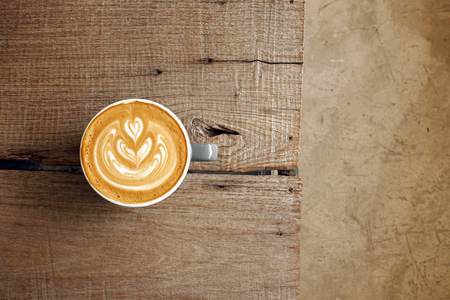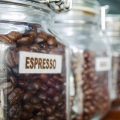1. Understanding the Pulse of Coffee Culture
In today’s fast-paced world, coffee shops are more than just places to grab a caffeine fix—theyre cultural hubs that reflect and shape consumer tastes. To stay ahead in the game, cafés across the U.S. closely monitor shifts in culture, seasonal preferences, and evolving customer behavior. It’s not just about what tastes good anymore; it’s about what feels relevant.
Following Cultural Trends
Coffee shops often look beyond the coffee industry to find inspiration for their next big hit. They tap into fashion trends, social media movements, wellness culture, and even pop culture. For example, as more people embrace plant-based lifestyles, cafés have responded by creating beverages with oat milk, almond milk, or trendy superfoods like matcha and turmeric.
Examples of Cultural Influences on Coffee Trends
| Trend Source | Example Beverage | Description |
|---|---|---|
| Wellness Movement | Turmeric Latte | A caffeine-free alternative known for its anti-inflammatory benefits. |
| Pop Culture | Pink Drink-Inspired Cold Brew | A visually striking drink driven by Instagram aesthetics and celebrity endorsements. |
| Sustainability Awareness | Oat Milk Latte | A dairy-free option that appeals to eco-conscious consumers. |
Adapting to Seasonal Shifts
Seasonality plays a huge role in coffee innovation. Think pumpkin spice everything in the fall or cold brews with fruity infusions in the summer. These limited-time offerings drive excitement and urgency among customers.
Popular Seasonal Beverage Types
| Season | Beverage Style | Why It Works |
|---|---|---|
| Fall | Pumpkin Spice Latte | Nostalgic flavors tied to autumn traditions. |
| Winter | Peppermint Mocha | Comforting holiday notes that evoke cozy memories. |
| Spring/Summer | Iced Matcha Lemonade | Light and refreshing with a health-conscious twist. |
Listening to Consumer Behavior
Coffee shops pay close attention to what their customers are asking for—both online and at the counter. Whether its through feedback forms, social media polls, or simply chatting with regulars, baristas gather insights daily. These interactions help cafés refine their menus and experiment with new flavors that might just become tomorrows viral sensation.
Customer Behavior Cues That Influence New Drinks:
- Social Media Buzz: Trending hashtags can hint at emerging flavor cravings.
- Lifestyle Changes: More remote workers = higher demand for all-day café options.
- Diet Preferences: Keto-friendly or low-sugar drinks cater to specific audiences.
The road to the next big beverage starts here—with a deep understanding of what people love right now and where their tastes are heading next.
2. From Barista Brainstorming to Brew Innovation
Ever wonder how your favorite coffee shop comes up with its newest hit drink? It’s not just luck—it’s a mix of creativity, teamwork, and listening closely to customers. Behind every trending latte or seasonal cold brew is a process that starts with baristas and ends with buzz-worthy beverages.
💡 Where Ideas Begin: The Barista Brainstorm
Baristas are more than just coffee makers—they’re the artists of the café world. Many trends begin right behind the counter when a barista experiments with new flavor combos, milk alternatives, or brewing methods during downtime. Some shops even host regular “innovation sessions” where staff can pitch and test out drink ideas.
Common Sources of Drink Inspiration
| Inspiration Source | Description |
|---|---|
| Seasonal Ingredients | Pumpkin in fall, berries in summer—seasonal flavors keep menus fresh. |
| Cultural Influences | Global flavors like matcha, horchata, or cardamom bring something new to the table. |
| Desserts & Sweets | Dessert-inspired drinks like s’mores lattes or tiramisu cold brew are big hits. |
| Customer Requests | A regular customer asking for oat milk lavender mocha might spark a trend. |
👂 Listening to the Crowd: Feedback Matters
The next step? Testing. Many cafés quietly introduce new drinks as specials before adding them permanently. Staff watch for reactions—are customers snapping pics? Coming back for seconds? Or do they leave it half-finished?
The Feedback Loop in Action
| Step | Description |
|---|---|
| Create & Test Drink | The team tries out a new idea as a limited-time offer. |
| Gather Customer Input | Cafés track sales, talk to customers, and monitor social media mentions. |
| Tweak Recipe | If needed, flavors or presentation get adjusted based on feedback. |
| Add to Menu (or Scrap It) | The drink either earns a permanent spot—or gets replaced by a better idea. |
🛠️ Tools of Innovation: More Than Just Espresso Machines
Coffee shops today have access to more tools than ever—from nitro taps to flavored foams and house-made syrups. These tools allow baristas to push the boundaries of what coffee can be. For example, some cafés use immersion blenders to create creamy textures without dairy, while others experiment with infusions using herbs or spices.
Taste Testing Tip:
If youre a regular at your local café, don’t be shy! Ask about new drinks they’re trying out—you might get an early sip of the next big thing before it goes viral on TikTok.
The journey from casual idea to menu staple is filled with trial, error, and plenty of taste tests. It’s this behind-the-scenes hustle that helps your favorite coffee shop stay ahead of the curve—and keeps you coming back for more.
![]()
3. The Role of Aesthetic and Social Media Buzz
In todays coffee culture, its not just about how a drink tastes—its also about how it looks and how easily it can go viral. Coffee shops across the U.S. know that creating a visually striking beverage can be the key to turning a local specialty into a national trend. Think rainbow lattes, glitter cappuccinos, or drinks with bold layers of color—these arent just fun to drink, theyre made to be photographed and shared online.
Why Looks Matter More Than Ever
The rise of platforms like Instagram, TikTok, and Pinterest has transformed how people discover new drinks. A well-lit photo of a beautiful latte art or a video of an eye-catching pour-over technique can reach thousands—or even millions—of viewers in just hours. Coffee shops intentionally design drinks that will stand out in photos, with unique garnishes, vibrant colors, or unexpected presentations.
Visual Appeal Elements That Spark Trends
| Element | Description | Why It Works |
|---|---|---|
| Color Contrast | Layered drinks with bright or natural colors (like matcha green & strawberry pink) | Catches the eye instantly on social feeds |
| Unique Toppings | Edible flowers, cereal pieces, whipped foam art | Adds texture and makes the drink more “Instagrammable” |
| Creative Containers | Mason jars, glass mugs, or custom-designed cups | Makes the entire experience feel special and share-worthy |
The Power of Social Sharing
Once a drink is visually ready for its close-up, social media does the heavy lifting. Influencers and everyday customers alike love sharing cool finds with their followers. This kind of user-generated content acts as free advertising for coffee shops. When one shop in Los Angeles posts a new trending drink and it gets picked up by a popular foodie account, suddenly cafes across New York and Chicago might start offering their own versions.
Turning Local Hits Into National Favorites
This cycle of visual appeal + shareability is what turns niche drinks into full-blown trends. Here’s how it usually happens:
- A local coffee shop creates a creative and photogenic beverage.
- Customers post photos/videos online using hashtags or tagging the café.
- The drink gains attention from influencers or media outlets.
- Larger chains or other independent cafés adopt similar versions.
- The drink becomes widely available—and officially trendy.
Coffee shops that understand this process are better positioned to set trends instead of chasing them. Visual storytelling isnt just part of the experience anymore—its essential to launching the next big beverage sensation.
4. Craft Meets Commerce: The Business of Trendsetting
Creating the next big coffee drink isnt just about wild creativity—its also about smart business. Coffee shops across the U.S. are constantly walking a fine line between innovation and profitability. From sourcing unique ingredients to setting the right price, every trendsetting drink is a product of careful planning and strategy.
Balancing Creativity with Profitability
Baristas and café owners love experimenting with new flavors and textures. But not every fun idea can turn into a best-seller. For a drink to make it onto the menu—and stay there—it needs to be both exciting for customers and viable for the business. This means considering ingredient costs, preparation time, and how easily staff can replicate it during busy hours.
Sourcing Trendy Ingredients
From lavender syrup to oat milk foam, trendy drinks often rely on specialty ingredients. The challenge? These ingredients can be expensive or hard to find consistently. Cafés need suppliers that offer quality products at competitive prices, and they often build relationships with local producers or specialty distributors to get what they need without breaking the bank.
Common Sources for Trendy Ingredients
| Ingredient Type | Common Source | Challenges |
|---|---|---|
| Alternative Milks (Oat, Almond) | Wholesale Distributors | Price Fluctuations |
| Flavored Syrups (Lavender, Rose) | Specialty Vendors | Limited Shelf Life |
| Exotic Spices (Turmeric, Cardamom) | Local Spice Shops | Sourcing Consistency |
Inventory Management for Seasonal Hits
Trendy drinks often have a short life cycle—they’re hot for a few months before customers move on to the next big thing. That’s why managing inventory is crucial. Order too much, and you’re stuck with unused stock; order too little, and you risk running out while demand is high. Smart cafés use sales data from previous trends to forecast demand and avoid waste.
Pricing for Appeal and Profit
No matter how cool a drink is, it has to be priced right. If its too expensive, customers might skip it; too cheap, and the café loses money. Successful coffee shops look at ingredient cost, competitor pricing, and perceived value when setting prices.
Example: Pricing a Trendy Lavender Oat Latte
| Cost Breakdown | Estimated Cost (USD) |
|---|---|
| Espresso Shot | $0.50 |
| Oat Milk | $0.70 |
| Lavender Syrup | $0.40 |
| Cup & Lid | $0.20 |
| Total Cost | $1.80 |
If the café sells this drink for $5.50, that leaves a gross profit of $3.70 per cup—enough to cover labor, overhead, and still make a solid margin.
In today’s competitive coffee scene, being creative isn’t enough—you’ve got to be smart with your numbers too. When craft meets commerce in the right way, that’s when trends truly take off.
5. Collaborations, Pop Culture, and Limited-Time Magic
When it comes to creating the next big beverage trend, coffee shops in the U.S. know that great flavor is just one part of the equation. To really get people talking—and lining up—brands tap into smart partnerships, pop culture moments, and the irresistible appeal of “only here for a short time” offerings.
Influencer Power: Sipping with the Stars
Social media influencers play a huge role in spreading the word about new drinks. When your favorite TikToker or Instagram star posts a story sipping on a brand-new cold brew, fans take notice. Coffee shops often partner with influencers to build hype before a launch, using teaser videos, behind-the-scenes content, and first-taste reactions.
Why It Works:
- Authenticity: Followers trust influencers’ opinions more than traditional ads.
- Speed: A single viral post can create overnight demand.
- Reach: Influencers connect with niche audiences that mainstream ads may miss.
Pop Culture Tie-Ins: From Screen to Sip
Another powerful tool? Pop culture. Coffee shops often create themed drinks tied to movies, TV shows, or trending topics. Think of a “Stranger Beans” latte inspired by a hit Netflix show or a colorful frappuccino celebrating a popular artist’s album drop. These tie-ins feel timely and fun—and customers love sharing their experience online.
Examples of Pop Culture-Inspired Drinks:
| Beverage Name | Inspired By | What Made It Trendy |
|---|---|---|
| The Witch’s Brew Frappuccino | Halloween & Fantasy Themes | Purple color + spooky toppings + Instagram buzz |
| The Barbie Pink Cold Foam | Blockbuster Movie Release | Nostalgia + aesthetic appeal + celeb collabs |
| The Grogu Matcha Latte | Star Wars Series (The Mandalorian) | Cute factor + fan loyalty + limited-time drop |
The Magic of Limited-Time Offers (LTOs)
The phrase “limited time only” is more powerful than you might think. It creates urgency—customers don’t want to miss out. Whether its a seasonal pumpkin drink or a weekend-only collaboration with a local bakery, LTOs push people to act fast and share their experience before its gone.
LTO Strategies That Work:
- Scarcity: Only available for days or weeks, not months.
- Exclusivity: Sometimes only at select locations or via app order.
- Surprise Drops: No advance notice—just show up and try it!
Pro Tip:
Coffee shops often combine all three tactics—influencer buzz, pop culture relevance, and limited-time access—to create the ultimate trend storm. The result? Long lines, sold-out signs, and plenty of social media chatter.
This multi-layered approach helps coffee brands not just follow trends but actually create them—one sip at a time.


